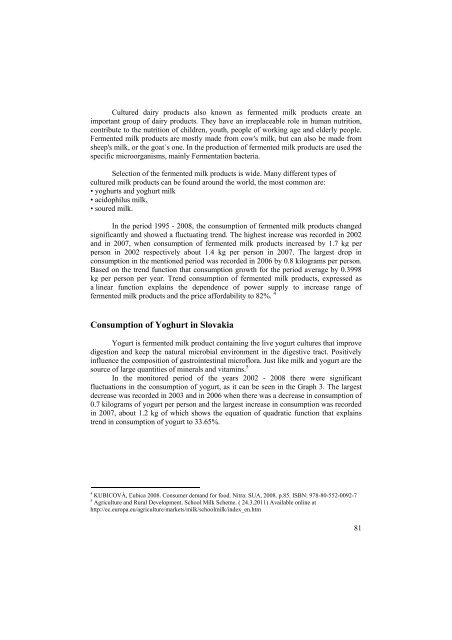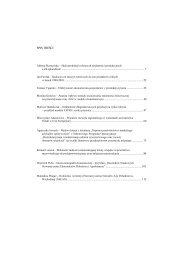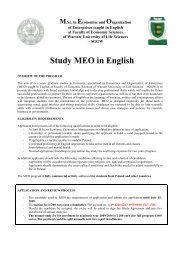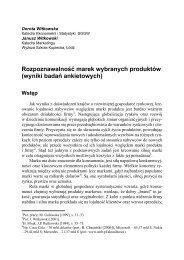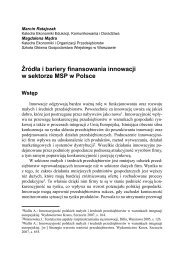pobierz - WydziaÅ Nauk Ekonomicznych SGGW w Warszawie
pobierz - WydziaÅ Nauk Ekonomicznych SGGW w Warszawie
pobierz - WydziaÅ Nauk Ekonomicznych SGGW w Warszawie
Create successful ePaper yourself
Turn your PDF publications into a flip-book with our unique Google optimized e-Paper software.
Cultured dairy products also known as fermented milk products create animportant group of dairy products. They have an irreplaceable role in human nutrition,contribute to the nutrition of children, youth, people of working age and elderly people.Fermented milk products are mostly made from cow's milk, but can also be made fromsheep's milk, or the goat´s one. In the production of fermented milk products are used thespecific microorganisms, mainly Fermentation bacteria.Selection of the fermented milk products is wide. Many different types ofcultured milk products can be found around the world, the most common are:• yoghurts and yoghurt milk• acidophilus milk,• soured milk.In the period 1995 - 2008, the consumption of fermented milk products changedsignificantly and showed a fluctuating trend. The highest increase was recorded in 2002and in 2007, when consumption of fermented milk products increased by 1.7 kg perperson in 2002 respectively about 1.4 kg per person in 2007. The largest drop inconsumption in the mentioned period was recorded in 2006 by 0.8 kilograms per person.Based on the trend function that consumption growth for the period average by 0.3998kg per person per year. Trend consumption of fermented milk products, expressed asa linear function explains the dependence of power supply to increase range offermented milk products and the price affordability to 82%. 4Consumption of Yoghurt in SlovakiaYogurt is fermented milk product containing the live yogurt cultures that improvedigestion and keep the natural microbial environment in the digestive tract. Positivelyinfluence the composition of gastrointestinal microflora. Just like milk and yogurt are thesource of large quantities of minerals and vitamins. 5In the monitored period of the years 2002 - 2008 there were significantfluctuations in the consumption of yogurt, as it can be seen in the Graph 3. The largestdecrease was recorded in 2003 and in 2006 when there was a decrease in consumption of0.7 kilograms of yogurt per person and the largest increase in consumption was recordedin 2007, about 1.2 kg of which shows the equation of quadratic function that explainstrend in consumption of yogurt to 33.65%.4 KUBICOVÁ, Ľubica 2008. Consumer demand for food. Nitra: SUA, 2008. p.85. ISBN: 978-80-552-0092-75 Agriculture and Rural Development. School Milk Scheme. ( 24.3.2011) Available online athttp://ec.europa.eu/agriculture/markets/milk/schoolmilk/index_en.htm81


